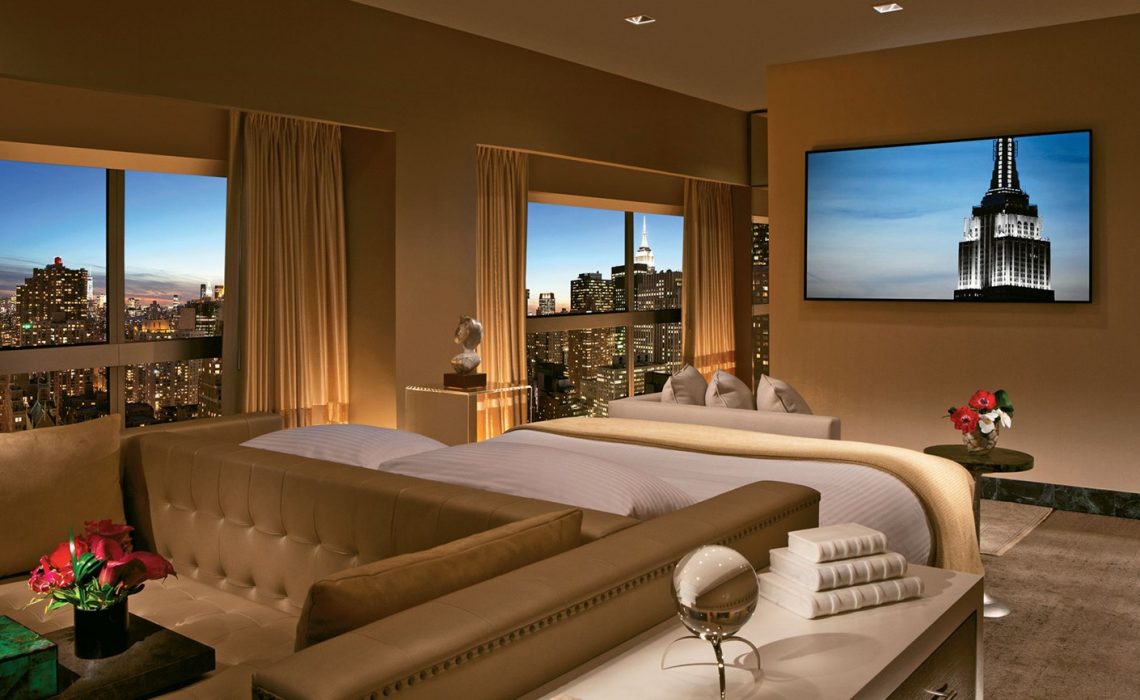
You might also like:
With the March closing of the Waldorf Astoria New York as part of a planned redevelopment, Hilton lost one of its largest footholds in the country’s most lucrative hotel market. And it took about a New York minute to gain much of it back.
In October, Hilton took over the London NYC and announced plans to convert the 516-room hotel into a Conrad-branded property by 2019. The hotel will be Manhattan’s second under Hilton’s luxury Conrad badge, complementing the 463-room Conrad New York, which opened in lower Manhattan in 2012.
The London NYC addition followed Hilton’s agreement in August to manage the One UN New York, the 439-room hotel that was built in 1976 on the upper floors of the two towers across from the United Nations headquarters. That hotel, which is owned by Millennium & Copthorne Hotels, was rebranded as the Millennium Hilton New York One UN Plaza.
With the two agreements, Hilton picks up almost 1,000 upper-upscale and luxury rooms in midtown Manhattan, where it lost more than 1,400 rooms with the closure of the Waldorf.
The Waldorf will reopen in about three years with substantially fewer hotel rooms — about 350 — along with 350 luxury condominiums.
The company says the timing of the two new signings is more coincidental than anything else and was spurred more by Hilton’s ongoing relationships with Millennium & Copthorne and with London NYC owner Abu Dhabi Investment Authority than by the Waldorf closure.
“We’ve had long relationships with both [hotel owners],” said Ted Ratcliff, senior vice president of management services at Hilton, noting the company’s management of the 471-room Millennium Hilton New York Downtown, which Hilton took over about two years after its 1992 opening. “We’ve been talking with them about doing this conversion to a Conrad for some period of time.”
Hilton may be taking a risk by expanding its upper-upscale and luxury presence in the New York market, where supply growth has been among the fastest in the country in recent years.
New York’s third-quarter room supply expanded by 4% from a year earlier, the sixth-fastest growth rate among the largest 25 U.S. hotel markets, according to STR. In fact, the city has about 115,000 rooms, which is up about 25% over the past five years, while another 17,000 rooms are in Manhattan’s development pipeline, according to NYC and Company, the city’s convention and tourism bureau.
Still, much of that new supply has been select-service hotels within the upscale and midscale sectors, which require less real estate in such a space-constrained market. With about 47,000 rooms, New York’s luxury and upper-upscale inventory is little changed within the past two years and is up just 10% since 2012, according to STR.
“New York is somewhat of a standout, in that it’s gotten above its fair share of supply compared with any of the other gateway markets,” said Mark VanStekelenburg, New York-based managing director at CBRE Hotels Consulting. “But that has been skewed toward lower-priced properties.”
Despite the prospect of Hilton having such a large higher-end presence in midtown — the 1,985-room New York Hilton Midtown is the city’s largest hotel — Ratcliff insists that even upon the Waldorf’s reopening, the hotels will cater to sufficiently different markets.
While allowing that there may be some crossover among leisure travelers, he said that among business travelers, the London/Conrad will appeal largely to industries such as entertainment and technology, while the Waldorf will attract more traditional businesses such as financial services and accounting. And, naturally, the Millennium Hilton New York One UN Plaza will continue to cater to the diplomatic set.
As for the city’s additional supply, Ratcliff downplayed any concerns.
“It’s not secret that the new supply has been a bit of a speed bump when it comes to rate posturing,” he said. “All of our hotels have been successful, so it’s a matter of tempering expectations until demand meets supply. But it’s not like people don’t want to be here.”
Source: travelweekly.com
